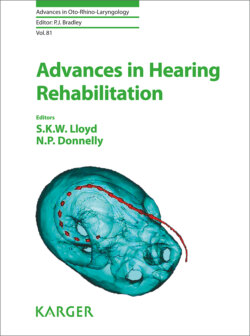Читать книгу Advances in Hearing Rehabilitation - Группа авторов - Страница 7
На сайте Литреса книга снята с продажи.
Preface
ОглавлениеAccording to the World Health Organization, hearing loss ranks seventh as a cause for disease burden with 26 million years of healthy life lost globally each year. There is estimated to be 630 million people worldwide affected by some kind of hearing loss. On an individual level, the effect of hearing loss was eloquently summed up by Helen Keller, a remarkable American woman who lived around the turn of the 20th century and dedicated her life to social reform. She was rendered both blind and deaf at the age of 19 months following Scarlett fever and described blindness as separating people from things but deafness as separating people from people. Thus, hearing loss is an important cause of social isolation with both psychological and economic implications.
In the early 21st century, we are incredibly fortunate to be able to offer effective hearing rehabilitation to most patients with hearing loss, a situation unique among sensory losses. There has been a progressive improvement in hearing aid technologies, and surgical reconstruction of conductive hearing losses has become increasingly reliable with improvements in surgical technique and prosthesis design. The most dynamic area of development in the field of hearing rehabilitation is, however, implantation otology. Cochlear implants have been in mainstream clinical use for 30 years and have revolutionized the lives of those with acquired and congenital profound sensorineural hearing loss. Implantable hearing aids have proliferated over the past 15 years and now fill the gap between hearing aids and cochlear implants as well as offering an alternative means of rehabilitation for those that cannot wear traditional hearing aids. For those that do not have a functional cochlear nerve or have a cochlea that is absent or significantly deformed, auditory brainstem implantation now has a proven track record in offering limited access to hearing.
This book brings together some of the world’s leading experts in hearing restoration to discuss recent advances in all aspects of hearing implantation otology. Chapters review the evidence behind the current applications of the wide range of hearing implants available for different types of hearing loss. The focus is on who should be implanted, with which device and how the outcomes can be optimized. There are contributions from authors leading in the extended applications of implantation otology and those horizon spotting for the next developments within this exciting field. New imaging techniques for the middle and inner ear are explored as well as innovations to improve Eustachian tube function.
We are very grateful to all the contributors for the enormous effort put into producing this book. It is aimed at otolaryngologists, audiologists and hearing rehabilitation professionals, and we very much hopeful that it will be a useful resource in providing a detailed overview of the current state-of-the-art in hearing rehabilitation.
Simon K.W. Lloyd, Manchester
Neil P. Donnelly, Cambridge
